When people talk about panic attacks, they sometimes throw the term around casually, but for those who live through it, there’s nothing trivial about the experience. Having dealt with panic disorder myself, I can tell you that it’s a very real and overwhelming condition. It involves sudden, intense bouts of fear or discomfort, where the body reacts as if it’s in immediate danger, even when there’s no actual threat. These moments are terrifying not just mentally but physically, with symptoms that can make you feel like you’re having a heart attack or are about to die.
Recognizing Panic Disorder Symptoms
Panic disorder is defined by unexpected and repeated panic attacks. These attacks typically start abruptly, and within minutes, you’re caught in a storm of symptoms like a racing heart, shortness of breath, dizziness, and trembling. My first few attacks left me convinced I was in serious medical trouble—it’s that physical. One of the most challenging aspects is how unpredictable they are. The first time I had one, I was in a familiar, safe environment, which made it even more confusing and scary.

According to the DSM-5, to qualify as a panic attack, you need to experience at least four out of thirteen possible symptoms. For me, it was the combination of chest pain, feeling detached from reality, and the fear of losing control that hit hardest. At the moment, I truly thought I was losing control over my body and mind. Other common symptoms include nausea, sweating, chills, and an intense fear of dying.
These attacks peak within minutes, but the aftermath can last much longer. I remember after one particularly bad episode, I felt shaky for hours, and the fear of it happening again lingered even longer. This fear of future attacks, known as anticipatory anxiety, often leads to avoidance behavior, which can be extremely limiting. I found myself avoiding places where I’d had attacks before, which only worsened my anxiety.
How Panic Disorder Differs from Anxiety Attacks
It’s important to understand that panic disorder isn’t the same as having occasional anxiety attacks. While anxiety builds gradually in response to stress, panic attacks are sudden and happen without warning. Panic disorder specifically refers to recurring and unexpected attacks, followed by constant worry about when the next one might strike. This constant worry can be paralyzing. I used to wake up some mornings with my heart pounding, not from a nightmare, but from the sheer anxiety of anticipating another attack.
Panic Disorder Treatment: What Worked for Me
Finding an effective treatment was a game-changer. Cognitive-behavioral therapy (CBT) was the first thing I tried, and it helped me understand how my thoughts contributed to my panic attacks. In therapy, I learned techniques to challenge my irrational fears and manage my anxiety before it spiraled into a full-blown attack. One of the most helpful things I practiced was gradual exposure. Instead of avoiding situations where I feared I’d have an attack, I slowly reintroduced them into my life, building up tolerance and reducing my anxiety over time.
Medications are another common treatment option. Selective serotonin reuptake inhibitors (SSRIs) can reduce the frequency and severity of attacks. My doctor prescribed these when my panic attacks started interfering with daily life. While medications like SSRIs take a few weeks to build up in your system, I noticed a gradual decrease in the intensity of my attacks.
Benzodiazepines, which act faster, were also recommended for moments of acute panic, but I avoided them long-term because of their potential for dependence. One of my friends who also struggled with panic disorder found natural remedies like certain herbal teas and breathing exercises helpful for managing stress and anxiety before it spiraled.
Managing Panic Attacks in Daily Life
Living with panic disorder means finding ways to manage the attacks when they occur. For me, learning grounding techniques like the “5-4-3-2-1” method was essential. This involves focusing on five things you can see, four you can touch, three you can hear, two you can smell, and one you can taste. It sounds simple, but in the heat of an attack, it brings your mind back to the present, reminding you that you’re not in danger.
Breathing exercises were another lifesaver. I practiced the 4-7-8 breathing method, which involves inhaling for 4 seconds, holding the breath for 7 seconds, and exhaling for 8 seconds. Slowing down my breathing helped me regain control during an attack. There were also times when simply having a close friend or family member with me could help lessen the intensity of the episode.
The Importance of Seeking Professional Help
Panic disorder doesn’t just go away on its own. I learned the hard way that pushing through it without help only made things worse. If you’re experiencing recurring panic attacks, I strongly recommend seeing a therapist who specializes in anxiety disorders. Cognitive-behavioral therapy, in particular, made a significant difference in my ability to cope with daily life. If therapy isn’t enough on its own, medication can also be an effective option.
In addition to therapy, I joined a support group. Talking to others who knew exactly what I was going through made me feel less isolated. It’s reassuring to hear from people who have successfully managed their panic disorder, and their stories of overcoming setbacks gave me hope.

Living a Full Life with Panic Disorder
Although panic disorder can feel overwhelming, especially during the height of an attack, it’s important to remember that it’s treatable. I’ve learned to manage my symptoms, and with the right combination of therapy, medication, and lifestyle changes, I’ve regained much of the freedom that panic disorder had stolen from me. Today, I still experience the occasional attack, but I’m no longer living in fear of when the next one will happen.





